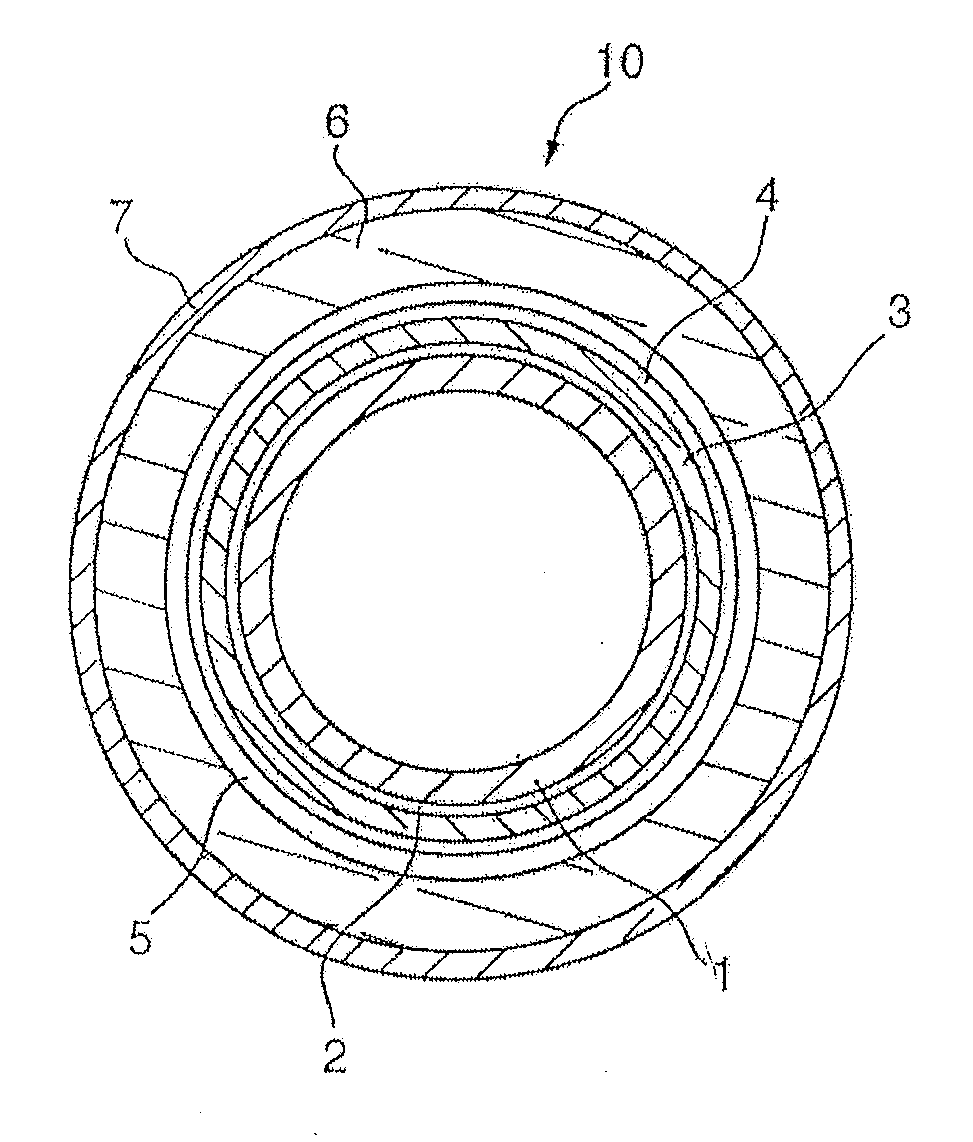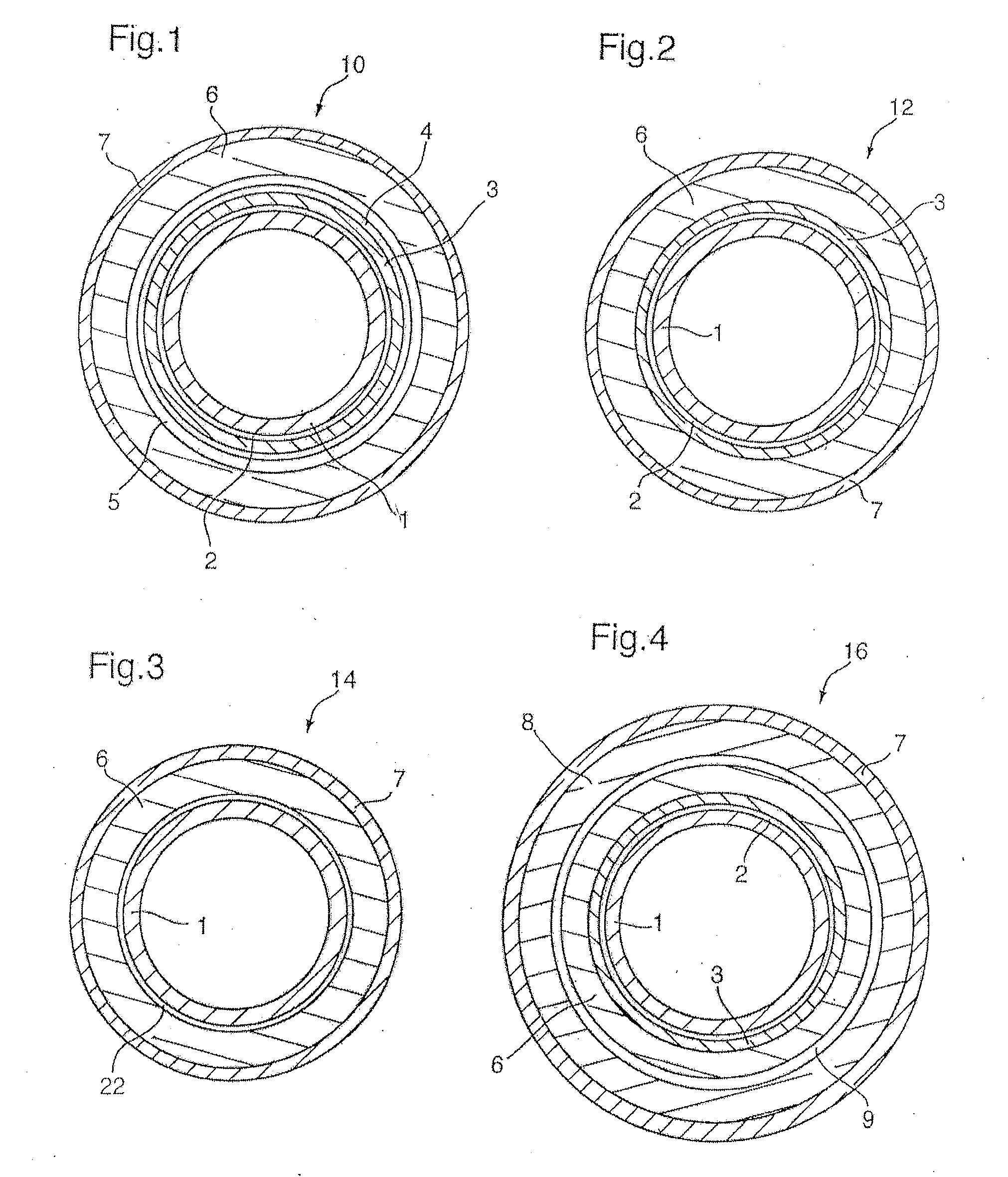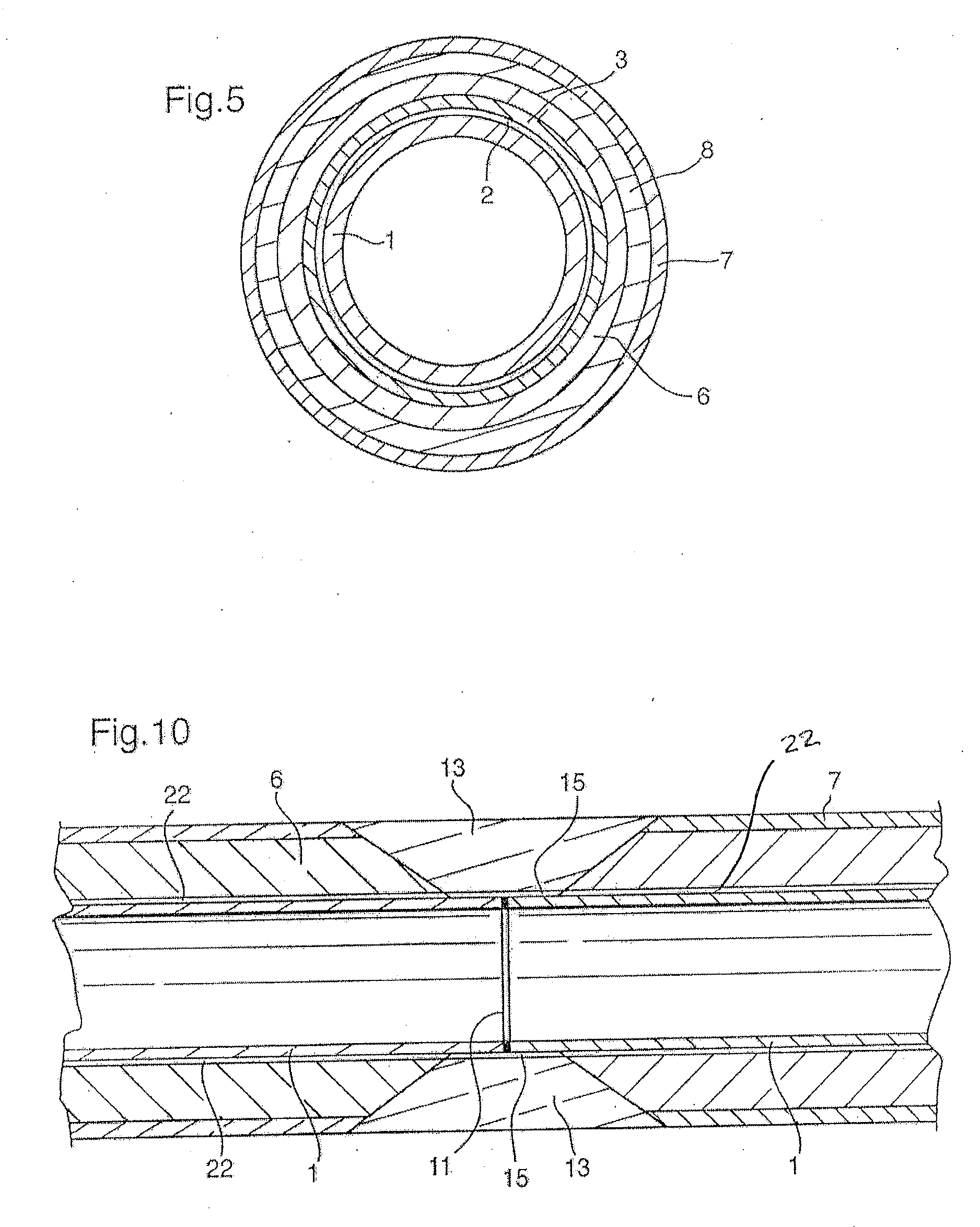High temperature resistant insulation for pipe
- Summary
- Abstract
- Description
- Claims
- Application Information
AI Technical Summary
Benefits of technology
Problems solved by technology
Method used
Image
Examples
example 1
[0142]In this example a steel pipe 1 is provided with a three layer corrosion protection coating as described above in connection with FIG. 1, comprising a corrosion protection layer 2, an adhesive layer 3 and a topcoat 4. The steel pipe 1, which was surface-blasted and cleaned, had an outside diameter of 140 mm and wall thickness of 10 mm. The pipe 1 was pre-heated to a temperature of 200° C. and spray-coated with a 0.300+ / −0.100 mm thick layer 2 of fusion bonded high temperature epoxy powder (density 1400+ / −100 g / l), followed immediately by the extrusion on top of the epoxy of a 0.300+ / −0.200 mm layer 3 of a high temperature modified styrene-maleic anhydride copolymer adhesive (density 1.060 g / cm3 and melt flow rate 0.6 g / 10 min) and a 6.0+ / −1.0 mm topcoat 4 of solid polyphenylene oxide-polystyrene blend (density 1.060 g / cm3 and melt flow rate 8 g / 10 min.) at melt temperatures of 220° C. and 260° C., respectively. Extrusion of adhesive layer 3 and topcoat 4 was accomplished in seq...
example 2
[0143]The corrosion-protected pipe produced in Example 1 was further coated with a 20.0+ / −1.0 mm layer 6 of the same solid polyphenylene oxide-polystyrene blend (degree of foaming=0%) of topcoat 4 using an extruder equipped with a sheet die by preheating the outer surface of said corrosion-protected pipe to a temperature of around 220° C., and wrapping the polyphenylene oxide-polystyrene blend at a melt temperature of 260° C. on top of the preheated outer surface. The insulated pipe thus produced was tested for the properties noted in Table 3.
example 3
[0144]Using the coating procedure described in Example 2, the corrosion protected pipe produced in Example 1 was further coated with a 30.0+ / −1.0 mm layer 6 of the polyphenylene oxide-polystyrene blend of Example 1 foamed to a density of 0.945 g / cm3 (degree of foaming=10%) using 0.5% by weight of an endothermic chemical foaming agent, and an outer 5.0+ / −1.0 mm. layer 7 of solid high impact polystyrene modified with polyethylene (density 1.020 g / cm3 and melt flow index 4.0 g / 10 min.). The insulated pipe thus produced was tested for the properties noted in Table 3.
PUM
| Property | Measurement | Unit |
|---|---|---|
| Temperature | aaaaa | aaaaa |
| Length | aaaaa | aaaaa |
| Fraction | aaaaa | aaaaa |
Abstract
Description
Claims
Application Information
 Login to View More
Login to View More - R&D
- Intellectual Property
- Life Sciences
- Materials
- Tech Scout
- Unparalleled Data Quality
- Higher Quality Content
- 60% Fewer Hallucinations
Browse by: Latest US Patents, China's latest patents, Technical Efficacy Thesaurus, Application Domain, Technology Topic, Popular Technical Reports.
© 2025 PatSnap. All rights reserved.Legal|Privacy policy|Modern Slavery Act Transparency Statement|Sitemap|About US| Contact US: help@patsnap.com



